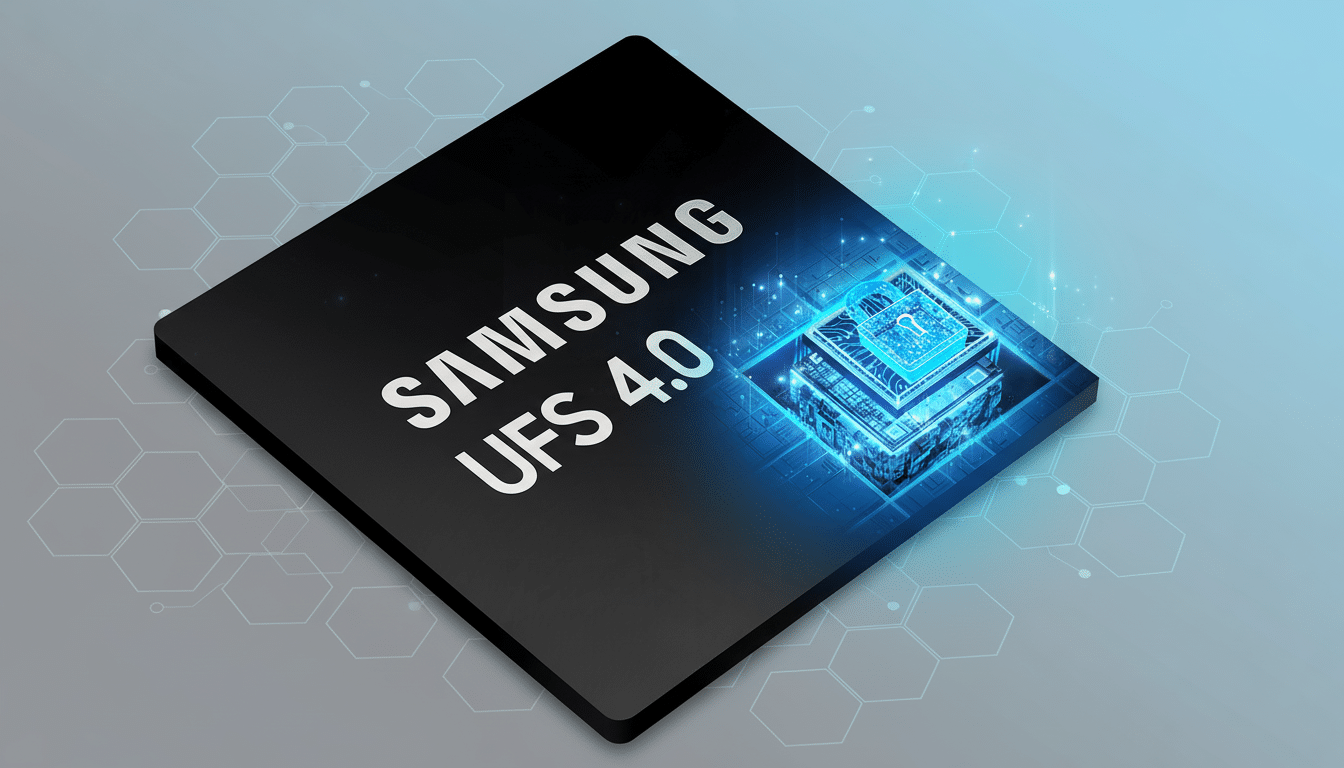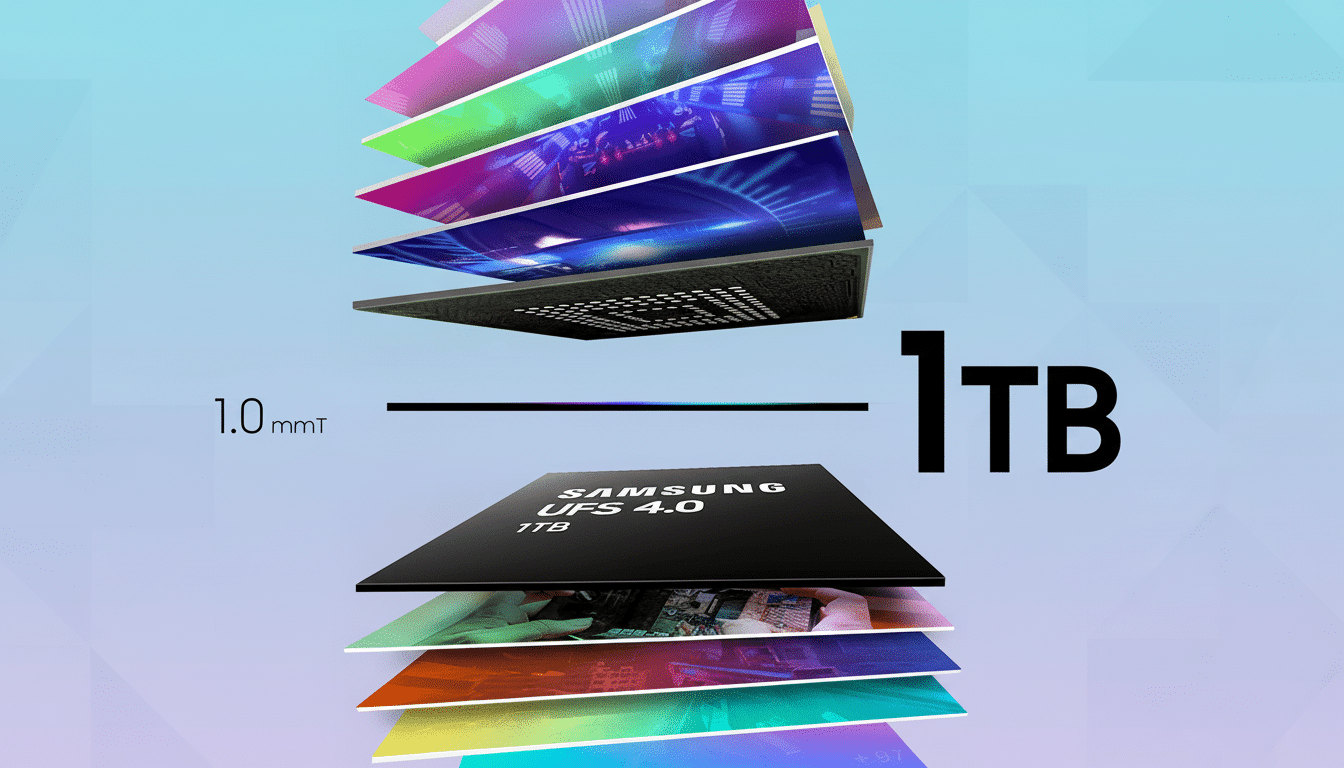The next level in smartphone storage is almost here. The organization behind Universal Flash Storage, a standards body called JEDEC, is putting the final touches on UFS 5.0, a spec that could offer a significant succession of speed and efficiency improvements that should reverberate across everything from app launches to camera performance, and even drive on-device AI experiences.
A Big Step Past UFS 4.0 in Speed and Efficiency Gains
JEDEC instructions specify that UFS 5.0 should be capable of delivering sequential throughput of up to 10.8 GB/s — a substantial increase compared to the current crop of UFS 4.0 solutions that peak at 4.0–4.2 GB/s and about 2.8 GB/s in reads and writes from leading suppliers today.
- A Big Step Past UFS 4.0 in Speed and Efficiency Gains
- The Speedy Storage Driving On‑Device AI Experiences
- Real‑World Payoffs You’ll Notice With UFS 5.0 Storage
- Backward Compatibility and an Easier Path to Adoption
- When UFS 5.0 Will Land in Phones and Expected Timelines
- The Bottom Line for Buyers Considering UFS 5.0 Phones

This headroom provides for immediate asset streaming in even the most demanding applications, more responsive game-level loads, and rich content playback without delay from expansive media libraries.
Just as with the other key components of 5G, the new standard is designed to minimize latency and provide stronger quality of service. That’s not just peak speeds in synthetic tests, but more consistent responsiveness under real workloads — installing updates while recording 4K video, or capturing a burst of photos while an app compiles AI suggestions in the background.
JEDEC’s roadmap also highlights improved power efficiency. Shuttling more data in less time gets devices through tasks that much more quickly, and silicon-level optimizations make for lower energy per bit read or written. The net result should be faster phones without too much of an impact on battery life.
The Speedy Storage Driving On‑Device AI Experiences
AI features are increasingly storage-bound. Huge language models, massive image pipelines, and multimodal assistants shuffle weighty weights, tensors, and asset files to and fro between storage and memory. When the storage layer lags, cold starts and context switches get slow; when it’s quick, interactions feel breezy.
UFS 5.0 will enable phones to preload model segments; stream generative textures in games; and process multi-frame HDR stacks — all with fewer bottlenecks. Picture smoother live transcriptions, on-the-fly photo edits such as removing a pesky object, and more responsive assistants capable of running larger models without having to lean so heavily on the cloud.
Real‑World Payoffs You’ll Notice With UFS 5.0 Storage
Speed shows up everywhere. There will be faster installs and load times for apps, as well as when you start up a data-heavy game, like an open-world RPG or something that requires a million patches and updates. Professional workflows such as 8K video capture, RAW photo bursts, and even implementing on-the-fly editing in the field can potentially benefit from not only higher sustained writes but more steady throughput once under heat.
It is not just the peaks that matter, but having so many people affected uniformly.
This piece was reported from New York and contributed by Steven Lee Myers. Correspondents reporting from around the world provided additional coverage.

When phones multitask processing background indexing, AI inference, and foreground tasks, storage QoS dictates if animations remain fluid or stutter. UFS 5.0’s emphasis on predictability ought to keep the UI feeling fluid even as workloads climb.
Backward Compatibility and an Easier Path to Adoption
JEDEC adds UFS 5.0 is backward compatible, too, which should help both phone makers and component suppliers add the technology to their products. That cuts down on friction across the supply chain, and it permits OEMs to future upgrade from slower storage tiers without having to repartition the entire product.
The major providers in memory — Samsung Semiconductor, Micron, Kioxia, and SK hynix — typically comply with JEDEC specifications and, at the MIPI Alliance level, the underpinning interfaces. We expect controller and SoC vendors to co-optimize firmware, drivers, and memory subsystems so that these gains manifest not just in synthetic benchmarks but during daily use.
When UFS 5.0 Will Land in Phones and Expected Timelines
Although the spec is rounding toward finished status, industry timelines will likely result in a slow rollout. A Samsung Semiconductor roadmap leaked in 2024 suggested that UFS 5.0 could come to market from around 2027, which would likely see flagship models adopting it first and pricier midrangers following shortly thereafter. In the meantime, high-end phones will keep relying on UFS 4.1.
That cadence parallels how past storage generations have shipped: sampling to partners, integration into next-gen SoCs, and phased adoption as yields improve and costs fall.
Early adopters will undoubtedly shine a light on AI and camera wins to make that upgrade appealing.
The Bottom Line for Buyers Considering UFS 5.0 Phones
UFS 5.0 is shaping up to be one of the most impactful under‑the‑hood upgrades of the next smartphone cycle and beyond. The promise is simple: higher bandwidth, lower latency, and better efficiency delivering the features people use — faster apps, steadier video, and smarter on‑device AI.
And as the standard locks and suppliers ramp production, the first wave of flagships will likely feel faster in a way that's hard to fake when they start arriving. It might not be the flashiest of specs, but with UFS 5.0 it becomes a marquee feature in its own right.

